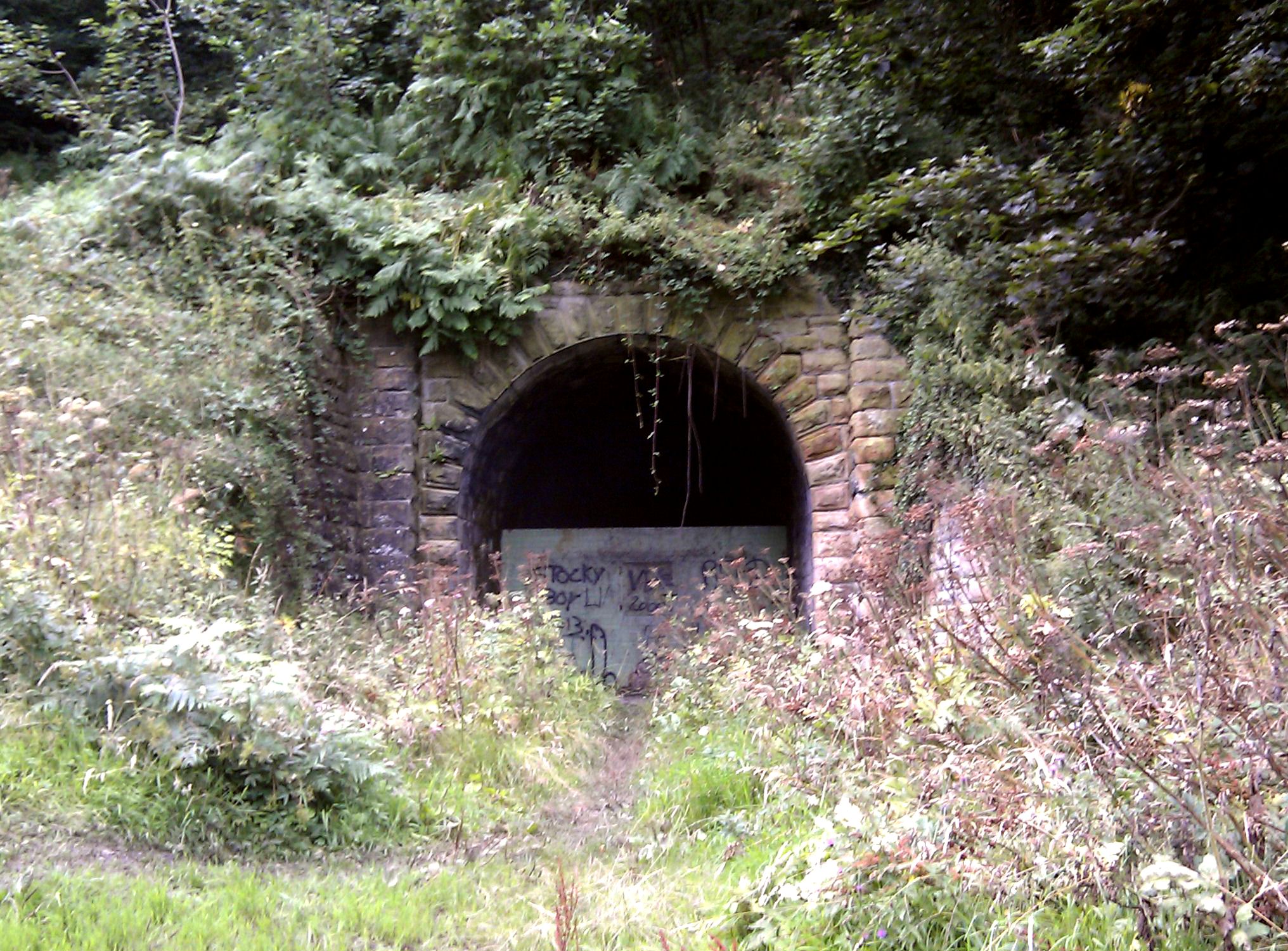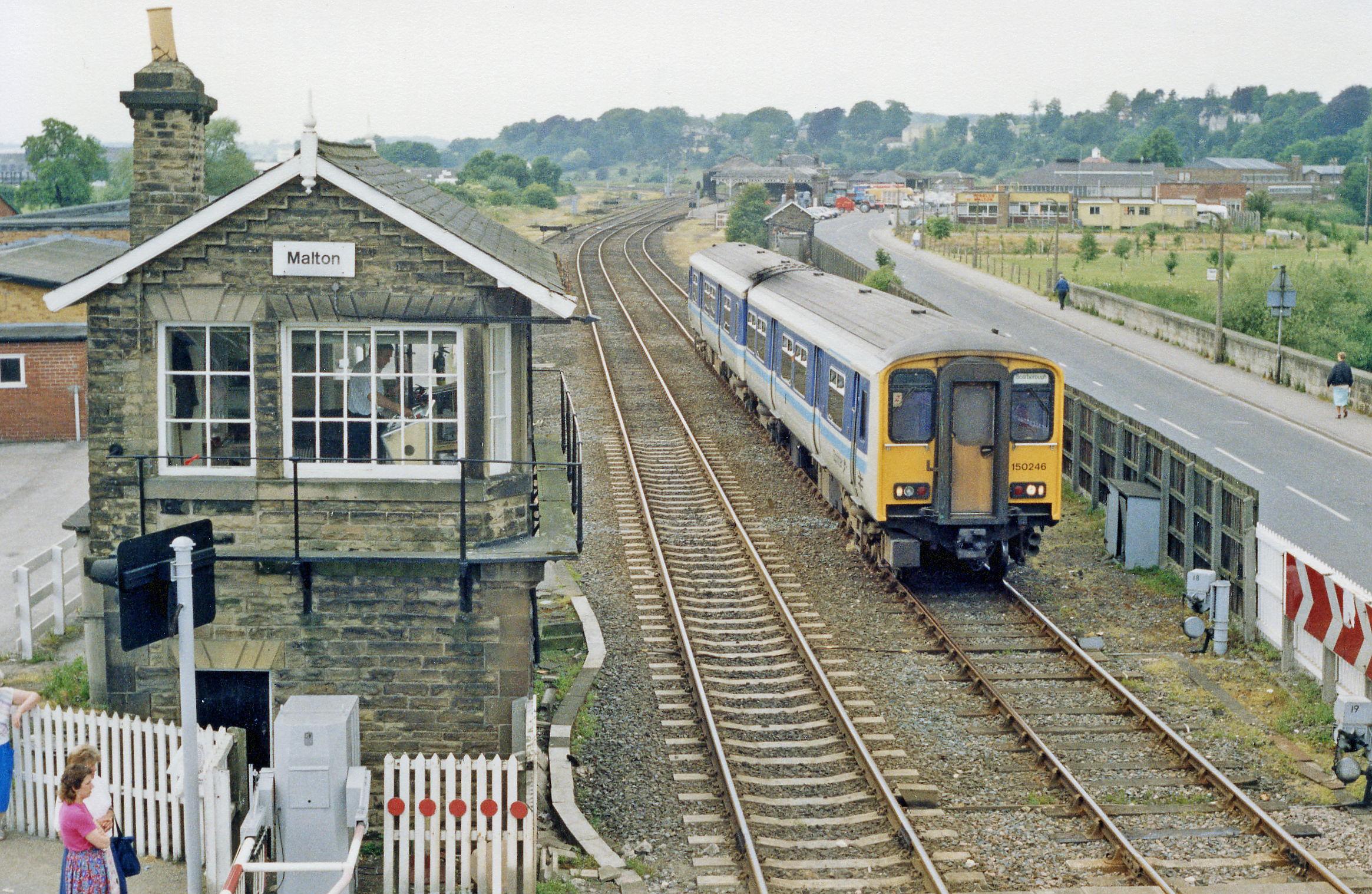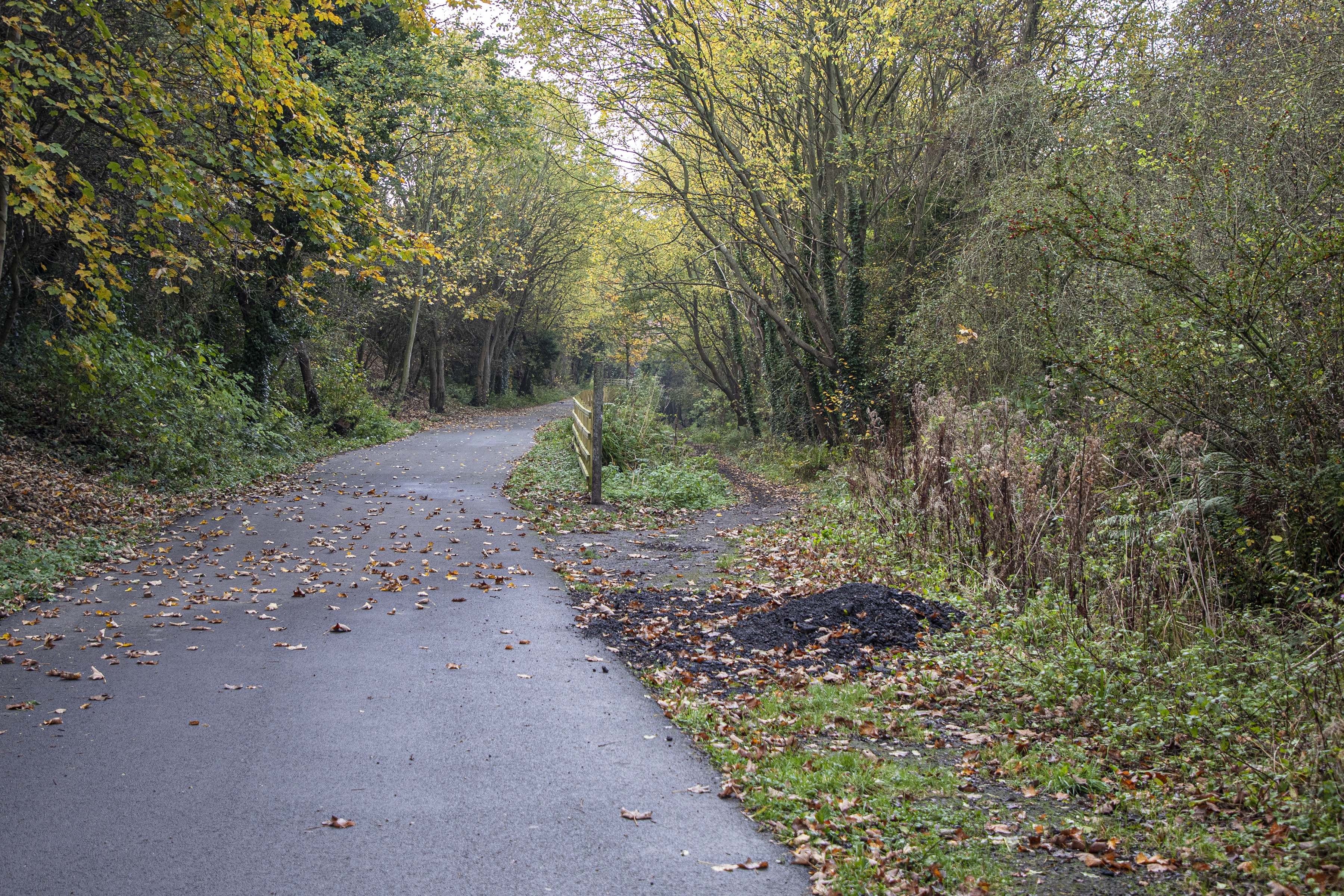|
Whitby Redcar And Middlesbrough Union Railway
The Whitby, Redcar and Middlesbrough Union Railway (WRMU), the Whitby–Loftus Line, was a railway line in North Yorkshire, England, built between 1871 and 1886, running from Loftus on the Yorkshire coast to the Esk at Whitby, and connecting Middlesbrough to Whitby along the coast. For much of its journey the line hugged the cliffs, and had a troubled build due to the proximity to the sea and poor quality of the construction on many of its original bridges and viaducts. The line was closed to passengers in May 1958, but the northern section to Boulby Potash Mine re-opened in the 1970s. History Background Whitby had been connected to the national rail system by the Whitby and Pickering Railway since the 1830s. Loftus was connected to the rail system by the 1870s via an extension of the Cleveland Railway: both the Cleveland Railway and the Middlesbrough and Guisborough Railway were constructed in the 1860s connecting Middlesbrough to Guisborough. Loftus to Whitby The ext ... [...More Info...] [...Related Items...] OR: [Wikipedia] [Google] [Baidu] |
Sandsend Tunnel
Sandsend Tunnel is a tunnel on the former Whitby, Redcar and Middlesbrough Union Railway The Whitby, Redcar and Middlesbrough Union Railway (WRMU), the Whitby–Loftus Line, was a railway line in North Yorkshire, England, built between 1871 and 1886, running from Loftus on the Yorkshire coast to the Esk at Whitby, and connecting ... that was opened in 1883 and closed in 1958. The rail line that ran through it was originally intended to travel along the top of the cliffs, however some of the cliff fell into the sea whilst construction was suspended so the NER constructed two tunnels, the Sandsend Tunnel and the Kettleness Tunnel. The Sandsend Tunnel is the longer of two tunnels being 1,652 yards (0.94 miles) in length. It is predominantly straight but the north-western 300 yards incorporate a curve to the north. There are a total of five air shafts, two of which have nearby service galleries leading off horizontally to the cliffs which were used to dump spoil while car ... [...More Info...] [...Related Items...] OR: [Wikipedia] [Google] [Baidu] |
Malton Railway Station
Malton railway station is a Grade II listed station which serves the towns of Malton and Norton-on-Derwent in North Yorkshire, England. It is operated by TransPennine Express that provide all passenger train services, running on the York to Scarborough Line. History Services from Malton station started on 7 July 1845 when the York to Scarborough Line was opened. The station buildings were designed by the architect George Townsend Andrews. On 3 May 1870, there was a gas explosion at the station. The platform edging stones were built on a double wall of bricks, separated by a gap, into which gas had leaked. A porter passing with a lamp caused the explosion, which lifted a length of the flagstones off the platform. The station is only served by trains between Scarborough and York (and beyond), however prior to the Beeching cuts, Malton station was also served by the Pickering Branch of the York and North Midland Railway with trains heading north (diverging at Rillington junc ... [...More Info...] [...Related Items...] OR: [Wikipedia] [Google] [Baidu] |
1866 Establishments In England
Events January–March * January 1 ** Fisk University, a historically black university, is established in Nashville, Tennessee. ** The last issue of the abolitionist magazine '' The Liberator'' is published. * January 6 – Ottoman troops clash with supporters of Maronite leader Youssef Bey Karam, at St. Doumit in Lebanon; the Ottomans are defeated. * January 12 ** The ''Royal Aeronautical Society'' is formed as ''The Aeronautical Society of Great Britain'' in London, the world's oldest such society. ** British auxiliary steamer sinks in a storm in the Bay of Biscay, on passage from the Thames to Australia, with the loss of 244 people, and only 19 survivors. * January 18 – Wesley College, Melbourne, is established. * January 26 – Volcanic eruption in the Santorini caldera begins. * February 7 – Battle of Abtao: A Spanish naval squadron fights a combined Peruvian-Chilean fleet, at the island of Abtao, in the Chiloé Archipelago of southern Chile. * February 13 – T ... [...More Info...] [...Related Items...] OR: [Wikipedia] [Google] [Baidu] |
Railway Companies Disestablished In 1889
Rail transport (also known as train transport) is a means of transport that transfers passengers and goods on wheeled vehicles running on rails, which are incorporated in tracks. In contrast to road transport, where the vehicles run on a prepared flat surface, rail vehicles (rolling stock) are directionally guided by the tracks on which they run. Tracks usually consist of steel rails, installed on sleepers (ties) set in ballast, on which the rolling stock, usually fitted with metal wheels, moves. Other variations are also possible, such as "slab track", in which the rails are fastened to a concrete foundation resting on a prepared subsurface. Rolling stock in a rail transport system generally encounters lower frictional resistance than rubber-tyred road vehicles, so passenger and freight cars (carriages and wagons) can be coupled into longer trains. The operation is carried out by a railway company, providing transport between train stations or freight customer faciliti ... [...More Info...] [...Related Items...] OR: [Wikipedia] [Google] [Baidu] |
Railway Lines Opened In 1883
Rail transport (also known as train transport) is a means of transport that transfers passengers and goods on wheeled vehicles running on rails, which are incorporated in tracks. In contrast to road transport, where the vehicles run on a prepared flat surface, rail vehicles (rolling stock) are directionally guided by the tracks on which they run. Tracks usually consist of steel rails, installed on sleepers (ties) set in ballast, on which the rolling stock, usually fitted with metal wheels, moves. Other variations are also possible, such as "slab track", in which the rails are fastened to a concrete foundation resting on a prepared subsurface. Rolling stock in a rail transport system generally encounters lower frictional resistance than rubber-tyred road vehicles, so passenger and freight cars (carriages and wagons) can be coupled into longer trains. The operation is carried out by a railway company, providing transport between train stations or freight customer facili ... [...More Info...] [...Related Items...] OR: [Wikipedia] [Google] [Baidu] |
Railway Companies Established In 1866
Rail transport (also known as train transport) is a means of transport that transfers passengers and goods on wheeled vehicles running on rails, which are incorporated in tracks. In contrast to road transport, where the vehicles run on a prepared flat surface, rail vehicles (rolling stock) are directionally guided by the tracks on which they run. Tracks usually consist of steel rails, installed on sleepers (ties) set in ballast, on which the rolling stock, usually fitted with metal wheels, moves. Other variations are also possible, such as "slab track", in which the rails are fastened to a concrete foundation resting on a prepared subsurface. Rolling stock in a rail transport system generally encounters lower frictional resistance than rubber-tyred road vehicles, so passenger and freight cars (carriages and wagons) can be coupled into longer trains. The operation is carried out by a railway company, providing transport between train stations or freight customer facilit ... [...More Info...] [...Related Items...] OR: [Wikipedia] [Google] [Baidu] |
Closed Railway Lines In Yorkshire And The Humber
Closed may refer to: Mathematics * Closure (mathematics), a set, along with operations, for which applying those operations on members always results in a member of the set * Closed set, a set which contains all its limit points * Closed interval, an interval which includes its endpoints * Closed line segment, a line segment which includes its endpoints * Closed manifold, a compact manifold which has no boundary Other uses * Closed (poker), a betting round where no player will have the right to raise * ''Closed'' (album), a 2010 album by Bomb Factory * Closed GmbH, a German fashion brand * Closed class, in linguistics, a class of words or other entities which rarely changes See also * * Close (other) * Closed loop (other) * Closing (other) * Closure (other) * Open (other) Open or OPEN may refer to: Music * Open (band), Australian pop/rock band * The Open (band), English indie rock band * ''Open'' (Blues Image album), 1969 * ' ... [...More Info...] [...Related Items...] OR: [Wikipedia] [Google] [Baidu] |
Redcar And Cleveland
Redcar and Cleveland is a borough with unitary authority status in North Yorkshire, England. Its main settlements are Redcar, South Bank, Eston, Brotton, Guisborough, the Greater Eston part of Middlesbrough, Loftus, Saltburn and Skelton. The borough had a resident population of 135,200 in 2011. It is a part of the Tees Valley mayoralty: the current mayor is Ben Houchen. The borough is represented in Parliament by Jacob Young (Conservative Party) for the Redcar constituency, and by Simon Clarke (Conservative Party) for the Middlesbrough South and East Cleveland constituency. History The district was created in 1974 as the borough of Langbaurgh, one of four districts of the new non-metropolitan county of Cleveland. It was formed from the Coatham, Kirkleatham, Ormesby, Redcar and South Bank wards of the County Borough of Teesside, along with Guisborough, Loftus, Saltburn and Marske-by-the-Sea, Eston Grange and Skelton and Brotton urban districts, from the North Ridin ... [...More Info...] [...Related Items...] OR: [Wikipedia] [Google] [Baidu] |
Boulby
Boulby is a hamlet in the Loftus parish, located within the North York Moors National Park. It is in the borough of Redcar and Cleveland, North Yorkshire, England. The hamlet is located off the A174, near Easington and west of Staithes. It was in the North Riding of Yorkshire until 1974, followed by the county of Cleveland until 1996. The village formerly had alum mining activity and is currently the site of Boulby mine, a site by Cleveland Potash Limited which produces half of the UK's potash output. Etymology and history Etymology Boulby is an old Scandinavian place name meaning ''"Bolli's Farm"'', constructed from the male personal name ''Bolli'' + -by, an Old Scandinavian element meaning "farmstead, village or settlement". Examples of Bolli from the 10th century are the Norse Bolli Thorleiksson and his son Bolli Bollason from the Icelandic Sagas, although neither were recorded as coming to England. The large number of villages and farmsteads containing a ... [...More Info...] [...Related Items...] OR: [Wikipedia] [Google] [Baidu] |
Whitby Railway Station
Whitby is a railway station at the head of the Esk Valley Line, which runs between Middlesbrough and Whitby via Nunthorpe. The station, situated east of Grosmont, serves the seaside town of Whitby, Borough of Scarborough in North Yorkshire, England. It is owned by Network Rail and managed by Northern Trains. The station is also served by heritage services operated by the North Yorkshire Moors Railway. History Whitby's original railway station stood near to the end of the current platform, in the form of the offices, workshop and carriage shed of the Whitby and Pickering Railway; a single track horse worked line opened throughout in 1836. Its engineer was George Stephenson. In 1845, the W&P was taken over by the York and North Midland Railway and converted into a double tracked, steam worked line. The Y&NM built the present Whitby station to the design of its architect George Townsend Andrews, who also designed the locomotive shed and the goods shed. Andrews' station incl ... [...More Info...] [...Related Items...] OR: [Wikipedia] [Google] [Baidu] |
Prospect Hill Junction
Prospect Hill Junction was a railway junction in Whitby, North Yorkshire, England. The junction had access to the line into Whitby Town railway station, railway station (and beyond to ), and also to the Scarborough line, which went south across Larpool Viaduct. It first saw traffic in December 1883, but did not open as a junction until 1885. It was closed to passenger and freight traffic in March 1965, though the lines were not lifted until 1973. History Prospect Hill Junction controlled access to the Scarborough line from Whitby, the line through to Loftus, and the line connecting Whitby Town railway station to Whitby West Cliff. The signal box controlling the junction, straddled the line to and from Whitby Town, and was from the Town railway station, and from West Cliff station. The gradient from Bog Hall Junction to Prospect Hill Junction was a 1-in-50, with the section to West Cliff Railway station being at a 1-in-60 to start with, before levelling out to a 1-in-165. ... [...More Info...] [...Related Items...] OR: [Wikipedia] [Google] [Baidu] |









